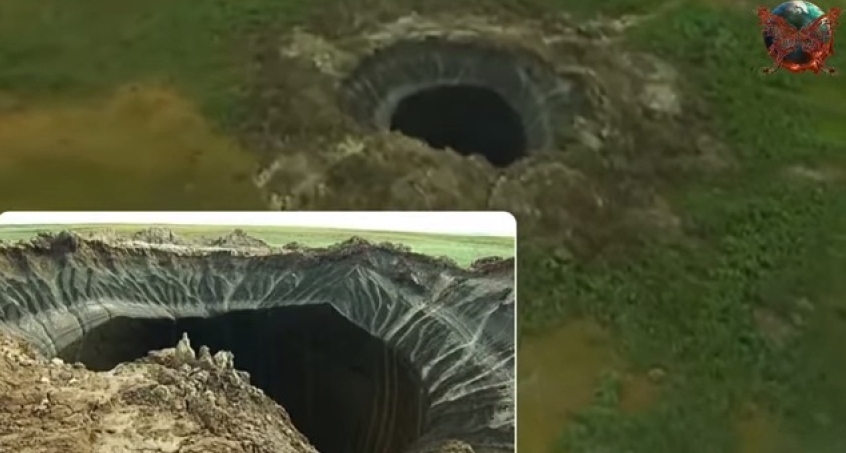
Russian geologists ventured last week to the bottom the Yamal crater in an effort to uncover the mystery behind the sudden appearance of the gigantic hole and other similar phenomena. The crater appeared in the Yamal Peninsula in Northern Siberia over the summer.
According to a report by The Siberian Times, the funnel of the crater is about 16.5 meters or 54 feet deep. The measurement excludes the rampart or barrier that formed on the surface. At the bottom of the crater is a frozen lake, estimated to be at least 10.5 meters or 35 feet deep.
In an interview with the online publication, Vladimir Pushkarev, director of the Russian Centre of Arctic Exploration, said, "We managed to go down into the funnel, all was successful. We used climbing equipment, and it is easier to do this in winter, than in summer, with the ground now hard."
The scientists did tests, took measurements, and collected samples of ice, soil, and gases inside the crater. They also plan to study the surroundings as well as go through images taken from space.
"We took all the probes we planned, and made measurements," Pushkarev added. "Now scientists need time to process all the data and only then can they draw conclusions."
The project is led by the Russian Centre of Arctic Exploration in cooperation with other institutes. The Yamal crater, the largest of three known holes in Northern Siberia that appeared in the recent past, is the first the scientists are studying. According to Pushkarev, when they have full understanding of this crater, then they would create a model to which they can compare the other craters.
While conspiracy theorists go for explanations like UFOs, missiles, and the like, other scientists have put forward more plausible theories to explain the sudden appearance of the holes. One of the more publicized ideas is gas hydrates — ice-like formations that contain methane. This same theory is also being proposed as the explanation for the Bermuda Triangle mystery.
Mr. Pushkarev, however, is determined to find more data before drawing out a conclusion.
He said, "I've heard about this Bermuda Triangle idea, but I repeat, our scientists need to work on materials first and only then draw some definite conclusions. At the moment we don't have enough information."













